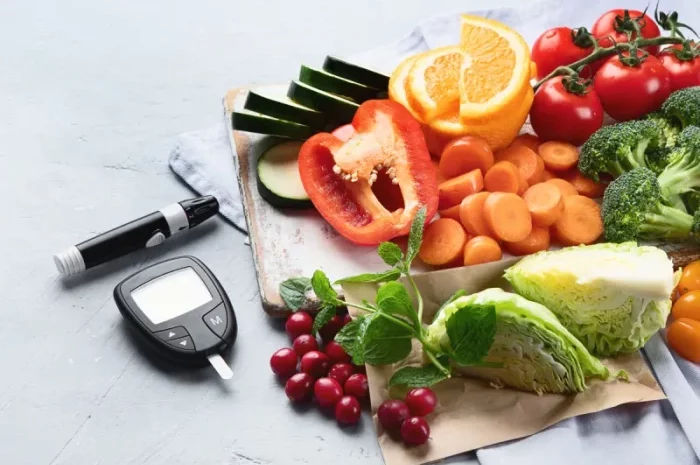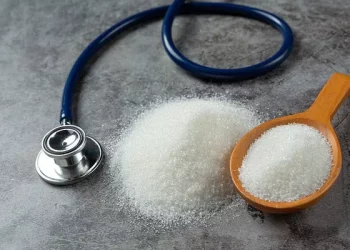Managing blood sugar levels while dieting is crucial for people with diabetes. Although a balanced diet is essential for maintaining overall health, certain dietary habits can lead to blood sugar fluctuations that may increase the risk of hypoglycemia, or low blood sugar. While many individuals focus on controlling calorie intake for weight loss or managing diabetes, it is just as important to maintain stable blood glucose levels. This article explores effective strategies for preventing hypoglycemia during dieting, and provides expert advice on how to structure your diet to minimize risks and maximize health benefits.
Understanding Hypoglycemia in the Context of Diabetes and Dieting
Before diving into practical strategies for avoiding low blood sugar, it’s important to understand what hypoglycemia is and how it can occur during dieting. Hypoglycemia occurs when the blood glucose level drops below normal levels, typically under 70 mg/dL. Symptoms can range from mild (such as shakiness, hunger, or irritability) to severe (including confusion, dizziness, fainting, and even seizures). In individuals with diabetes, this condition can be triggered by various factors, including excessive medication, improper meal timing, and changes in physical activity.
For individuals with diabetes, especially those on insulin therapy or medications like sulfonylureas, the risk of hypoglycemia is heightened. These medications work by increasing insulin production or enhancing its effectiveness, which can lower blood sugar levels too much if not properly balanced with food intake. When you are dieting, especially if the diet includes reduced carbohydrate intake, it’s vital to pay close attention to blood sugar levels to prevent the dangerous consequences of hypoglycemia.
The Role of Diet in Blood Sugar Management
When dieting, the quality of your food choices plays a significant role in maintaining blood sugar balance. A well-structured, diabetes-friendly diet ensures that you are consuming the right amount of nutrients without causing extreme fluctuations in your blood glucose levels. The goal is to create a diet that supports gradual, consistent blood sugar levels, even during periods of weight loss or dietary restriction.
Carbohydrate Management
Carbohydrates have the most direct impact on blood sugar levels. The key is not to avoid carbohydrates entirely but to focus on the types and amounts you are consuming. Here are several tips for managing carbohydrates while dieting:
Choose Low-Glycemic Index (GI) Foods: Low-GI foods are digested slowly, leading to gradual increases in blood sugar, which can help prevent sudden drops. Examples include whole grains, legumes, vegetables, and fruits with a lower GI, such as berries and apples. Avoid high-GI foods, like white bread and sugary snacks, which cause rapid spikes and subsequent crashes in blood sugar.
Balance Carbohydrates with Protein and Healthy Fats: Including protein and healthy fats with each meal can slow the absorption of carbohydrates and prevent blood sugar from dropping too quickly. Protein-rich foods include lean meats, fish, eggs, and plant-based sources like tofu, while healthy fats come from avocados, nuts, seeds, and olive oil.
Control Portion Sizes: Even when choosing healthy carbs, portion control is essential. Large portions of carbohydrates can cause blood sugar spikes, while too few can lead to hypoglycemia. Work with a registered dietitian to develop a balanced meal plan that meets your specific dietary needs.
Meal Timing and Frequency
In addition to focusing on the quality of your food, the timing and frequency of your meals are crucial for preventing low blood sugar. Skipping meals or going too long without eating can increase the risk of hypoglycemia, especially if you’re on insulin or other medications that lower blood sugar.
Eat Regular, Balanced Meals: Try to have meals and snacks at consistent times throughout the day. Regular eating helps maintain steady blood sugar levels and prevents significant drops. Aim for three balanced meals with 1-2 snacks in between, depending on your needs and activity level.
Don’t Skip Breakfast: After an overnight fast, your body is in a state where blood sugar can naturally dip. A nutritious breakfast that includes protein, fiber, and healthy fats can help stabilize blood sugar levels and set the tone for the rest of the day.
Adjust Meal Timing Around Exercise: If you exercise regularly, particularly with a reduced-calorie diet, plan meals and snacks around your physical activity. Exercise increases insulin sensitivity, which can make it easier to experience hypoglycemia if you don’t have adequate fuel. Try eating a small snack containing carbohydrates and protein 30 to 60 minutes before exercise and consume another small meal afterward to replenish energy.
Identifying Foods that Help Maintain Stable Blood Sugar
When managing blood sugar during a diet, it’s essential to incorporate foods that support blood sugar control. Many foods are naturally rich in fiber, protein, and healthy fats, which help slow digestion and stabilize blood sugar levels.
Leafy Greens and Non-Starchy Vegetables: Vegetables like spinach, kale, broccoli, and cauliflower are low in carbohydrates and rich in fiber, making them an ideal choice for blood sugar management.
Whole Grains: Opt for whole grains such as quinoa, brown rice, barley, and oats, which provide a slow release of glucose into the bloodstream compared to refined grains.
Legumes: Beans, lentils, and peas are rich in fiber and protein, making them a great choice for stabilizing blood sugar levels. They can be included in soups, stews, salads, or as side dishes.
Nuts and Seeds: Almonds, walnuts, chia seeds, and flaxseeds provide healthy fats and fiber that help control blood sugar. A small handful of these can serve as a snack between meals to prevent dips in blood sugar.
Lean Protein Sources: Chicken, turkey, fish, tofu, and eggs provide high-quality protein, which is essential for maintaining muscle mass and avoiding dips in blood sugar.
Healthy Fats: Incorporating healthy fats from sources like olive oil, avocados, and fatty fish such as salmon can help regulate blood sugar levels and improve insulin sensitivity.
The Importance of Hydration
Staying hydrated is another key element in managing blood sugar during dieting. Dehydration can make it more challenging to regulate blood sugar levels, as it can concentrate glucose in the bloodstream and impair kidney function. Additionally, dehydration can lead to confusion, which might mimic the symptoms of hypoglycemia.
Drink Water Throughout the Day: Aim to drink water regularly, especially between meals and during exercise. Avoid sugary beverages like soda or fruit juices, as they can cause rapid increases in blood sugar.
Limit Caffeine and Alcohol Intake: Excessive caffeine can lead to dehydration and may increase the risk of hypoglycemia when combined with insulin or other diabetes medications. Similarly, alcohol can interfere with blood sugar regulation, and it’s best to drink in moderation, if at all.
Recognizing the Early Signs of Low Blood Sugar
Even with careful planning, hypoglycemia can still occur, particularly during periods of weight loss or changes in activity levels. Therefore, it’s essential to recognize the early warning signs of low blood sugar so you can take action before it becomes a serious problem.
Common early symptoms of hypoglycemia include:
-
Shakiness or tremors
-
Sweating
-
Irritability or mood changes
-
Hunger or feeling weak
-
Dizziness or lightheadedness
-
Rapid heart rate
If you experience any of these symptoms, it’s important to consume a fast-acting carbohydrate to raise your blood sugar quickly. A small serving of fruit juice, glucose tablets, or a few hard candies can help. Afterward, follow up with a balanced snack or meal that contains protein and carbohydrates to maintain stable blood sugar levels.
Working with Healthcare Professionals to Tailor Your Diet
Managing blood sugar while dieting is a highly individualized process. If you have diabetes and are considering a new diet plan, it’s important to work closely with a healthcare provider, such as a registered dietitian or endocrinologist. They can help you create a personalized nutrition plan that supports your weight loss goals while minimizing the risk of hypoglycemia.
Regular monitoring of your blood sugar levels, especially during periods of dietary change, is also crucial. Using a continuous glucose monitor (CGM) or regularly checking your blood glucose levels with a home glucose meter can provide valuable insights into how your diet is affecting your blood sugar, and allow you to make adjustments as needed.
Conclusion
Avoiding low blood sugar when dieting is a key component of managing diabetes effectively. By following a carefully planned diet, paying attention to meal timing, portion sizes, and choosing foods that promote steady blood sugar, you can safely manage your diet without putting your health at risk. Remember to stay hydrated, recognize the signs of hypoglycemia, and work with your healthcare team to ensure your diet plan is personalized and sustainable.
A well-balanced, diabetes-friendly diet not only helps you maintain your blood sugar levels but also supports long-term health and well-being. It’s about finding the right balance of nutrients to fuel your body without sacrificing your health. By adopting these strategies, you can navigate the challenges of dieting while keeping your blood sugar in check, helping you achieve your weight loss goals without compromising your health.
Related topics:
What Foods Are Not Good for Prediabetes?























